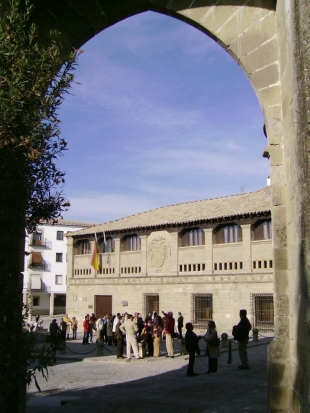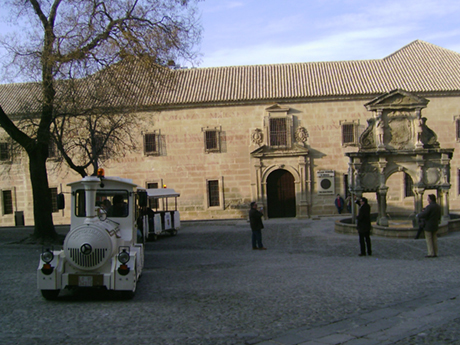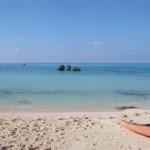
Baezaarch
Head to the heart of the old quarter of Baeza and you step back in time.
Narrow streets, gorgeous sandstone monuments and balconies oozing a riot of colours. Baeza, in Jaén province, has been named “Exemplar Renaissance City” by the European Council and is twinned with the larger Ubeda as “Historic-Artistic Ensemble” by UNESCO.
Both have fabulous 16th century monuments but for me Baeza is the favourite. It´s smaller and has a snug and friendly feel. If you´ve only time to visit one, although they are only 8km apart, I suggest Baeza. If you´ve time for both then do so and be inspired by the collection of Gothic, Mudejar and Italian Renaissance style monuments.
Plaza del Populo
Your first stop in Baeza is likely to be the palm-filled Plaza del Populo, where you can find the oficina de turismo in an ornate Plateresque building. Stop a while in the plaza to admire the fountain with an Iberian-Roman statue of Imilce said to be the wife of Hannibal.
Explore the narrow, cobbled in places, streets or take the Italian-style tourist train to learn about the 15th century Gothic Palace and Santa Cruz church with Romanesque architecture. The highly decorated cathedral with early Gothic features and a main frontage in Renaissance-style is also on the tour whose architect Andres de Vandelvira also designed some of Ubeda´s monuments and the enormous cathedral in Jaén.

Tourist Train and Old University Baeza Jaen, Spain
El Museo de la Cultura del Olivo
With plenty of time on your hands you must visit the olive oil museum, El Museo de la Cultura del Olivo at the Hacienda La Laguna just 8km from Baeza. An eye-opener into the old traditional methods up to the modern-day processes of extracting and packaging olive oil. There´s a craft shop on site, a farm park, lovely grounds to stroll in to build-up to or walk off lunch or take a longer walk in the Paraje Natural Laguna Grande to, as the name suggest, Laguna Grande or Large Lake the winter home of many water birds.
Culture and nature, local gastronomy and the base of it all, in just one day.






